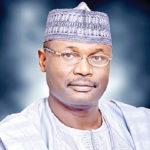THE Nigerian entertainment Industry has experienced a massive development over the years; the Nollywood of yesterday is no longer the same Nollywood that we have now. The industry, popularly called Nollywood, is currently ranked as the second largest in the world in terms of output after India’s Bollywood. This change or evolution cannot be properly justified without a brief history of Nollywood. The first films we had in Nigeria were made by filmmakers such as Ola Bolagun, Moses Olaiya and Hubert Ogunde in the 1960s. In 1972, the indigenisation decree was issued by Yakubu Gowon, which demanded the transfer of ownership of about 300 film theatres from their foreign owners to Nigerians. This resulted in more Nigerians playing active roles in films and cinemas. After other moderate performing films, “Papa Ajasco (1984)” by Wale Adenuga became the first grossing film with approximately N61,000 ( in 2015, it grew higher to #21,552,673) in three days. Back in the days, Papa Ajasco and company was at the tip of everyone’s tongue, its popularity spread through both Young and Old, especially with its theme song “Papa Ajasco and Company, this is a film by Wale Adenuga Production…” A year later, “Mosebolatan (1985)” by Moses Olaiya also went ahead to gross #107,000 in five days, approximately N44,180,499 in 2015.
The Nigerian film Industry experienced another huge success with the release of the film Living in Bondage(1992), a film about a businessman,whose dealings with a money cult result in the death of his wife. One of the first Nigerian film to reach international fame was the 2003 release of “Osuofia in London” which starred the popular Nigerian Comedic actor, Nkem Owoh. The first Nollywood films were produced with Traditional analog video, but presently, Nollywood movies are produced with Digital Video Technology. Time magazine published an article that rated Nollywood Industry as the third largest after USA’s Hollywood and behind India’s Bollywood Production. The success of the Nigeria industry over the years led to the debate of Old Nollywood vs New Nollywood, due to the significant change and transformations recorded in the film industry. This debate often pits the veteran practitioners against the New and fresh faces of Nollywood, over who laid the foundation of the Industry and who is responsible for the international recognition given to the Industry.
The differences between the Old Nollywood and New Nollywood will be examined below; a) Quality: The advancement in technology and innovation has helped improve the quality of the films produced now, giving them better output. The technology used in the past cannot be compared to the technology used presently, as the technology used in the past gave a poor or low quality of image. This development, has propelled Nigerian films to being featured in major film festivals. If we could recall correctly,the popular actress Genevive Nnaji’s film “Lionheart” was bought by Netflix for a Billion Naira, this signifies the tremendous change in the Nigeria Industry. b) Quantity: Back in the days, the number of films produced annually were pale due to the high cost of productions, not all producers could afford it. However, compared to the New Nollywood; the amount of films produced annually are large to the extent that, Nigeria was named the third largest film producers in the world, owing to the sheer number of films produced annually. According to report, not less than fifty movies are released in a week. c) Talent: Many actors who belong to the Old Nollywood industry, would be quick to point out the decline, in the number of talented actors in the industry. Back in the days, actors were versatile and armed with a broad range of acting skills but, now the actors are stereotyped and stuck in one acting role. People are now picked to be actors and actresses based on their popularity and not talent. (d) International Recognition: Unlike, the Old Nollywood, the New Nollywood has the luxury of the social media and internet to push their crafts and production to the world. This has helped the Industry to gain International Recognition. Back in the days, there was nothing like social media or the internet.
The development of Nollywood can be seen in the recent films; 30 Days in Atlanta (2014), The Wedding Party (2016), King of Boys, The Merry Men, Jenifa Diary and many more. These films have gained international recognition and popularity; they also show a new change and feature in the plot and storyline of the films, as a lot more creative writers are beginning to show up. For example, the film Merry Men shows a dynamic storyline, it tells the story four rich and powerful men known as the Merry Men, who steal from the rich to give it to the poor, the film also features some unique fighting scenes like the karate’s and a blockbuster scene where the actors engage in a bloody gunshot fight. These storylines are more likely seen in Hollywood, Bollywood, or the Korean film Industry than in Nollywood. This signifies the advancement of the Film Industry. Also, the Ghanian influence on the Nollywood Industry should also be mentioned, Ghanian actors are now getting starring roles in mainstream Nollywood films. This is due to the contract signed between a Nigerian filmmaker and a Ghanian Production Company, which demanded that Ghanian stars get featured roles. Which is why ghanian actors such as; Van Vicker, Jackie Appiah, John Dumelo, Nadia Buari and Yvonne Okoro and many more are now featured in Nollywood films.
In 2009, Kunle Afolayan’s The Figurine became a game changer with its success both domestically and internationally, the film grossed N30 million. The following year, Ije by Chineze Anyaene overtook it. The title then moved on to Half of a Yellow Sun, a movie adaptation of Chimamanda Ngozi Adiche’s Novel. The title then moved on to Kemi Adetiba’s Wedding Party. Nollywood continues to grow and shows no signs of slowing down. Our light continues to shine. The challenge is ensuring that the light shines even brighter in future.
- Olagunju writes in via olagunjuelizabeth489@gmail.com






